To borrow a line from Cory Doctorow, “Just look at this banana drawing. Just look at it.” Ok, Cory has a thing for bananas, not Picasso, but for me the ‘just look at it’ sentiment is the same. Just look at art.
Like most people, I was expectant when I heard of the new trove of Picasso works, but seeing a slideshow of 11 selected works on the French website Liberation Next was a huge disappointment. I finally had a chance to see a few carefully selected pieces out of 271, and wondered immediately where the good examples were. Why wouldn’t they want to publish the good ones? Perhaps some of the remaining 260 works are Picasso’s, but I don’t believe that all these other 11 pieces are his work. Here’s why.
First, I need to lay a little groundwork. For those of you who haven’t studied art, or art history, or Picasso, you might not know that he was born with a gift -which was a pitch-perfect understanding of the language of drawing, accompanied by a relentless desire to work. His drawing is always facile, his level of draftsmanship was freakishly accurate even at an early age, and he was compelled to bend this facility as he developed as an artist throughout his life.
Of all the elements of drawing, it is his understanding of form that’s most notable. When you look carefully through a lifetime of his work, you see that he understood how to convey form in drawing/painting like no one else, remarkably, consistenly, and I’ve not seen anything he’s drawn or painted where he has been relieved of that understanding. This is what you need to remember when you’re looking at Picasso- he couldn’t ‘flatten out’ a form in a way that kids do, or draw the clunky way that beginning drawing students do. There’s no struggle with transforming line, or any of the other elements of drawing, into form. When he said that he always wanted to draw like a child, he meant that he wanted to be able to draw in that delightful, flat way that kids have, by using shapes that remain firmly 2d and don’t suggest an illusion of three dimensions behind the picture plane. His understanding of form was his specific gift, and present at a very early age - it’s what made him a prodigy, and he worked toward getting rid of it - notably with cubism- but was never entirely successful. It’s always there in his work, even in the flattest, most linear things he drew. This gift he had was like perfect pitch - you can’t get rid of it or make it go away.
To show you what I mean, let’s start with a sketch of some pigeons he made at eight, possibly nine. He’s concerned with form, and this drawing is an example of what he meant when he said he never drew like children draw:
Five years later when he started art school at 14, he made this drawing from a plaster cast:
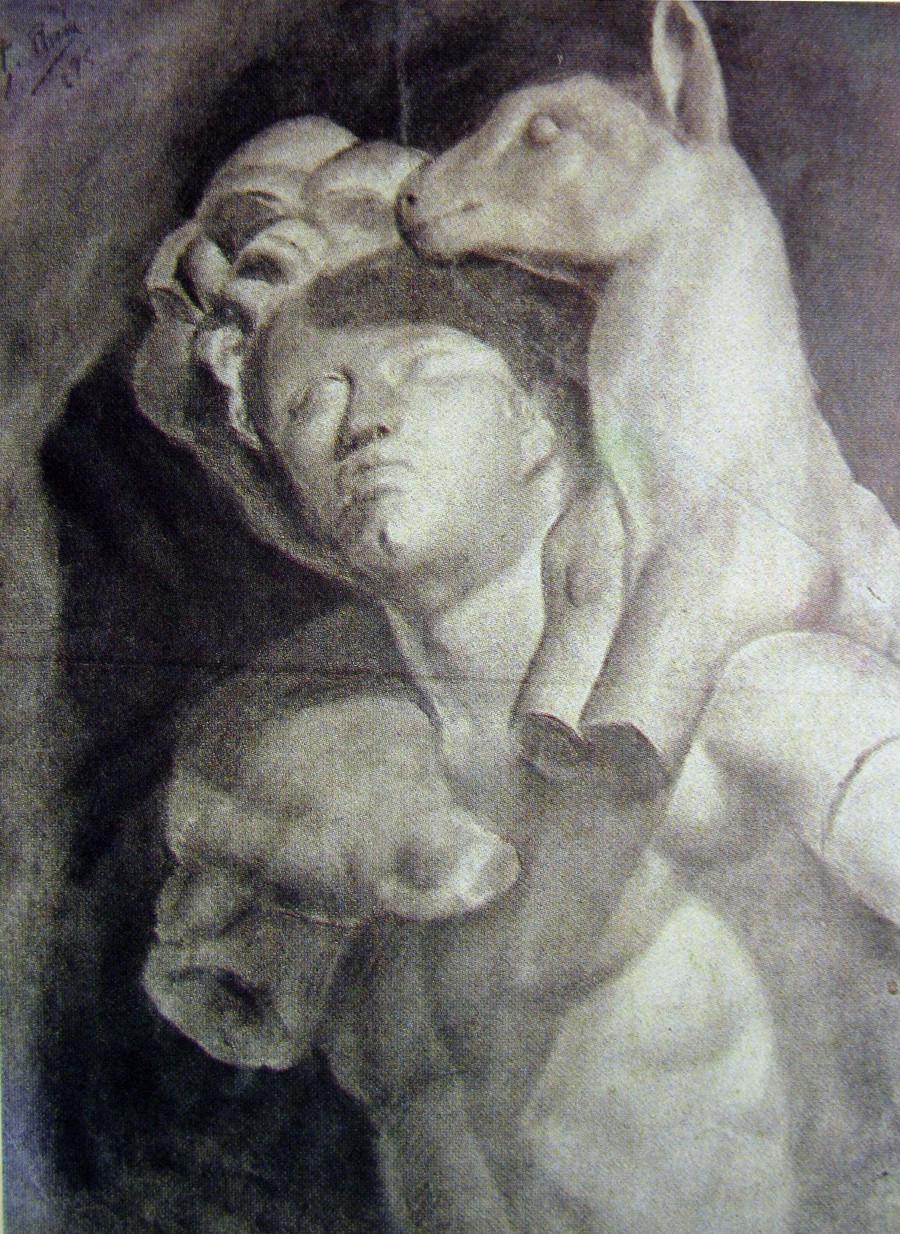
And a drawing from a living model, still at art school a year later at 15:
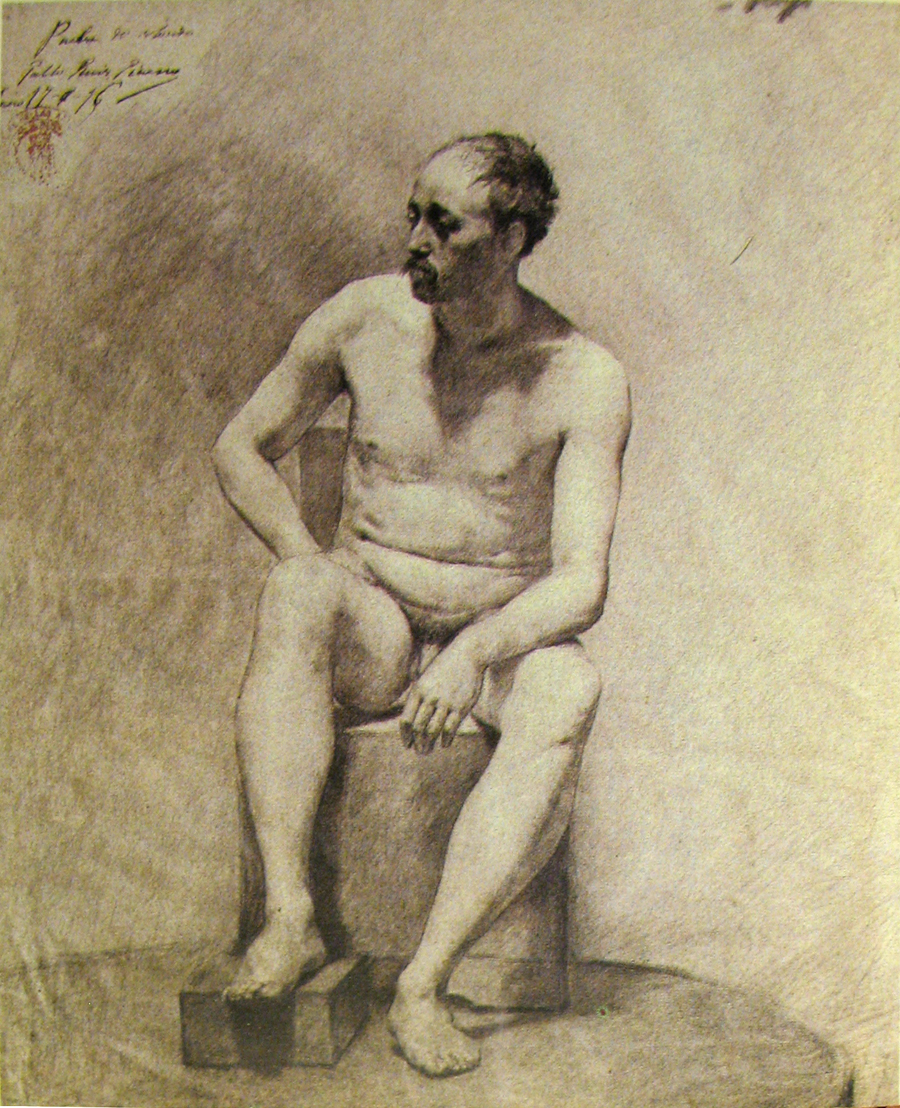
When I was teaching, I found that very few people knew about this very early work of Picasso’s, and learning about it somehow legitimized his other work for them. Knowing about this helped them learn to pay attention to what they saw in art. Now, just look at this supposed Picasso drawing. Just look at it.
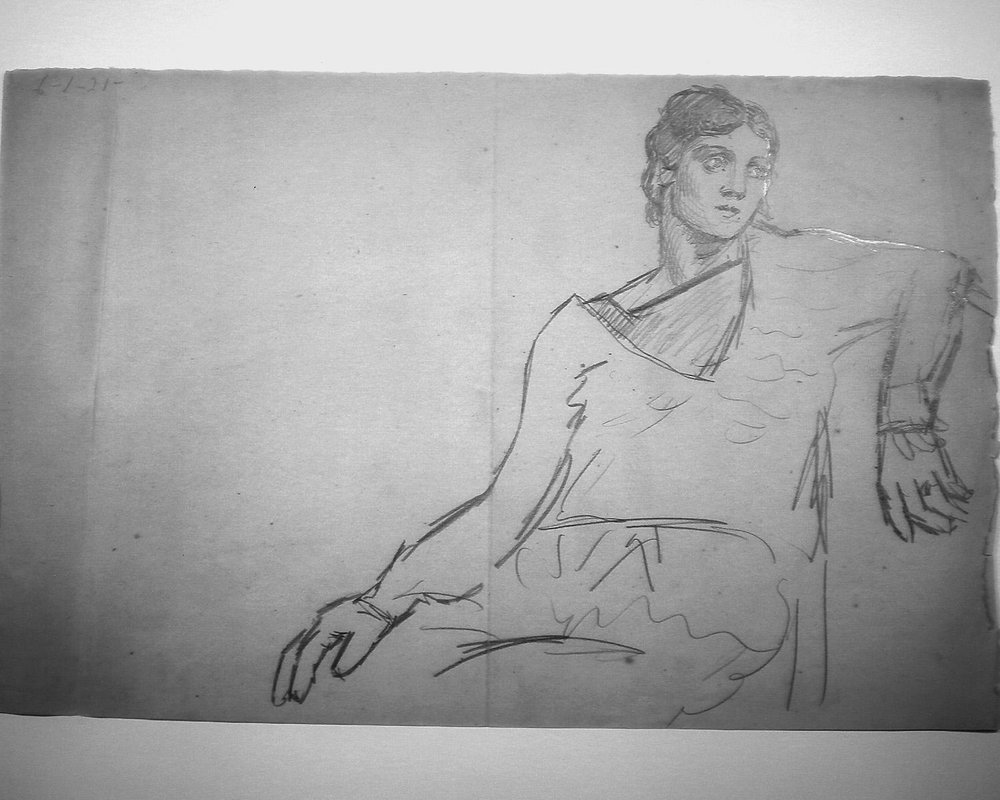
I hardly know where to start.
Here’s the first nail, historically speaking: the date on the upper left corner of the drawing says 6-1-21-. As is the custom in Europe, Picasso wrote dates with the day first, then the month, so it would be January 6th, 1921, which means that Olga would have been 8 months pregnant with Paulo, Picasso’s first child, born February 4, 1921. Oops, the forger forgot to take into account personal history.
Again, Picasso understands form. I photoshopped the head away from the drawing so you can look at the body. The head is what distracts people, being the most ‘Picasso-esque’ part of the picture, and makes people rethink their initial ‘this doesn’t look quite right’ position. Even if you initially miss how utterly unconvincing her figure is in terms of form and fluidity, you have to admit that this alleged Olga is a far cry from 8 months along. Picasso wouldn’t have ignored that fact in a drawing he did of Olga at 8 months, nor would he try to hide it - her pregnancy and how it changed her svelte ballerina’s body into a solid, thick form was the point of his work at this time. He was in the midst of painting massive, chunky, extra heavy figures, clearly pleased with his ability to transform Olga’s body with his own, as well as his brush.
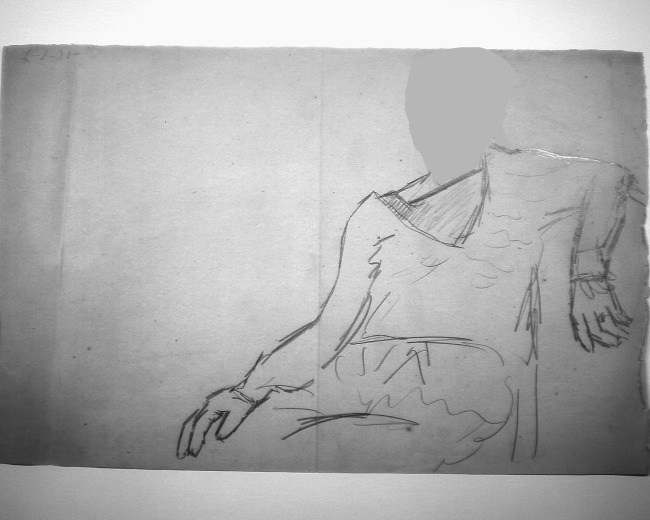
Now take a look at some of the other things that jump out, like the awkward hands, covered with work gloves, sorta. It’s as if the forger remembered ‘Oh yeah, Picasso was making really meaty hands then, so I better try to make them look big and heavy’ and then pressed his graphite heavily onto the paper, going back over the countour in short movements because he was pressing so hard. Next, look at her left hand, and then notice the small left hand above it. The small one was drawn first, then the forger moved over to draw the shoulders and collar, and then noticed that the proportion of the hand was too small, then had to draw it bigger to come closer to the correct proportion. In order to keep it looking massive, he drew it by pressing heavily again on the paper.
Oh, and then he added a wedding ring, sure, ‘cause they were married, get it? Please find me a drawing or painting Picasso did of Olga (or any of his wives) wearing a wedding ring, because I’ve never seen one. Did you see how the right arm looks broken at the wrist? The forger has no idea how a hand joins an arm - no understanding of form. Would you kindly look at that shirt collar that doesn’t have any body inside it? It’s completely flat.
Whoever drew this also doesn’t understand how gesture becomes contour. Look at the way the scribbling stays scribbling, and doesn’t indicate a chair edge, or a collar edge, or a lap edge. Picasso’s drawing speed wasn’t about scribbling, it described something about the subject. And what is going on with those wimpy, hairy lines on her left shoulder? They aren’t there to indicate a darker value, nor do they follow the form of the body, they just start and stop within the shape of the shoulder, not coming near the edges of the form, but filling it in, without defining anything. They’re equivocal, plainly different in feeling from the short, heavily-made marks of the hands. There’s also an odd wavy line in her lap that doesn’t mean anything. This drawing has a thoroughly hesitant and dubious quality. But Picasso never doubted his ability to draw; he was never unsure of the language of drawing. He would draw over information he had drawn before, but not apprehensively - he just drew, with confidence, because he never had to wonder if he’d ‘be able to get it right this time.’
And, pardon me, but can you tell me why her butt looks like the bottom of a cloud that a second-grader would draw? This forger simply doesn’t understand the fundamental tools of drawing - line, contour, gesture, shape, value, form - and has no idea how to control them in the quick yet convincing way that Picasso did. There’s no facility.
Here’s the drawing, annotated, so these points might be easier for you to see:

Here’s an authentic drawing of Olga and Paulo that Picasso made shortly after his birth, about a month after the fake one above was purportedly made. Just look at this Picasso drawing. Just look at it.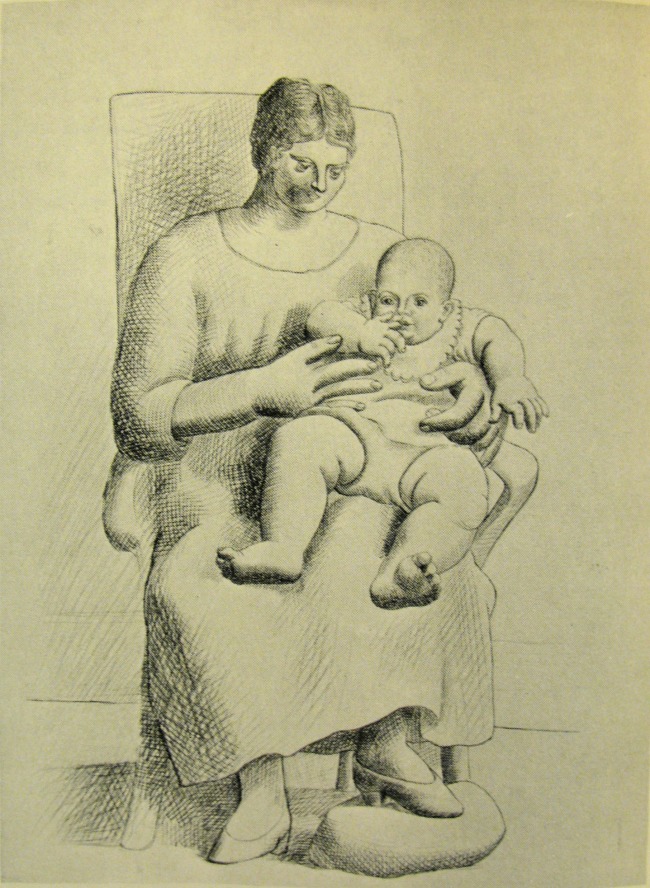
Here’s another thing to notice - look through Picasso’s legitimate work, and you’ll find he never made unconvincing hands or feet. Even if the hands or feet were pared down and linear, he always understood the form behind them- I’ll get to this again in a second. Take a look at this newly discovered fake from the treasure trove:
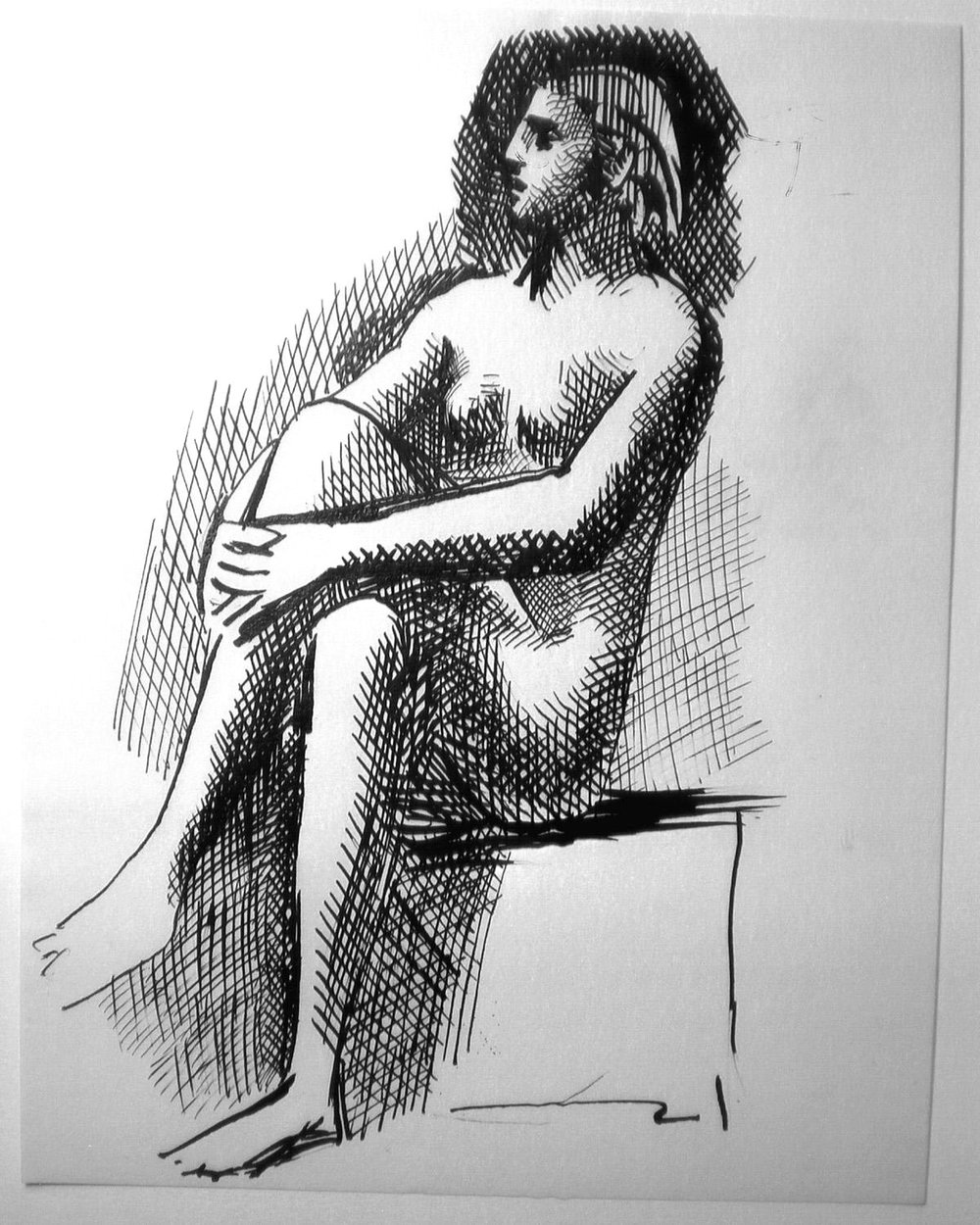
This drawing is supposedly from 1920, according to the website, so Olga would be the model. Oh, wait - the whole pose was copied from a print from the Vollard Suite from 1934, in which his blonde mistress Marie-Therese served as a model, along with Olga. Recall that Picasso’s work is autobiographical. He was engrossed with Olga in 1920 - she was his muse and model, a Russian brunette ballerina. He didn’t hire a blonde model in 1920 so he could practice figure drawing. Some may argue that the facial features on the fake drawing bear a resemblance to those of Marie-Therese, especially the forehead to the nose. But dear forger, if you’re going to try to fake a Picasso, don’t use cross-hatching to disguise the fact that you can’t draw a neck, or don’t know how to deal with a head of hair, or aren’t sure about where an ear would go exactly, or can’t find body contours, or can’t draw the edge of the box she’s sitting on, or can’t figure out how high up a knee should be if she’s crossing her legs, or are timid about drawing private bits if the pose suggests it. Just look through his work - Picasso was not timid at all about drawing and painting women’s private bits. Or men’s, to be fair.
Now look again at the hands and feet- all four are tossed off - no crosshatching in them at all, because the forger avoided them. If he used any crosshatching on the hands and feet, he would run the risk of making them all look worse than they do now. And if Picasso were going to draw the figure in a way that suggests an unnatural positioning of limbs, why only do it in one tiny part of the drawing instead of throughout, like always? The forger drew the knee and leg down to the ankle so it would face toward us, then wrenched one ankle 90 degrees to the side at just the point where the foot meets the ankle.
Here’s the same fake drawing, annotated:
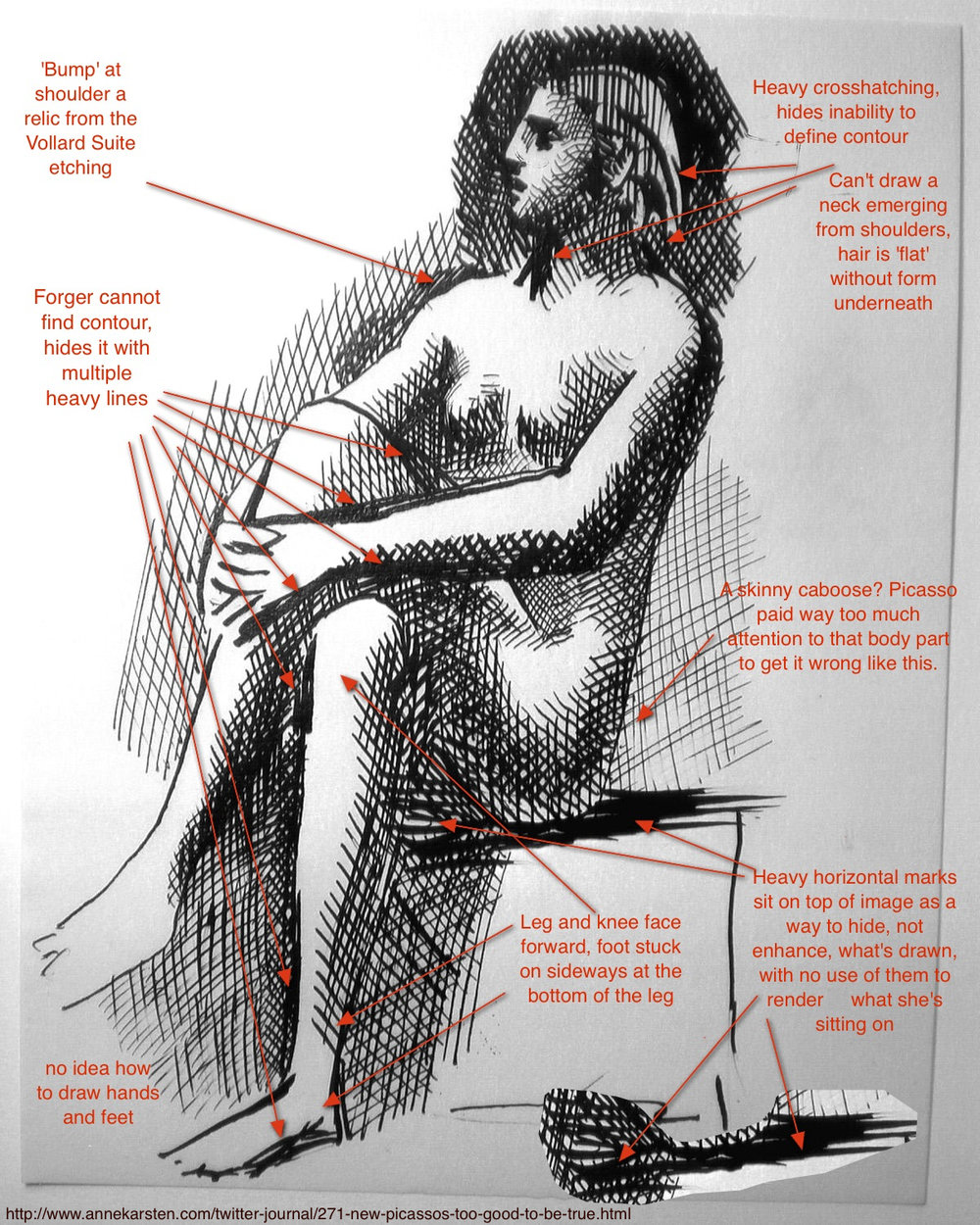
Here’s the etching from the Vollard Suite the forger used as inspiration, Femme assise au chapeau et femme debout drapee. The print is in an edition of 250, so there are plenty floating around, not to mention its appearance in books:

Here’s the extent to which the forger tried to be clever. He knew this image was an etching, and knew Picasso would have drawn it on the grounded copper plate as a mirror image. The forger thinks, “I’ll make an early drawing of this pose, reversed, you know, to show precedence for the etching and lend viability to the forgery.”
Note the etched image as Picasso would have drawn it, reversed, next to the forgery:
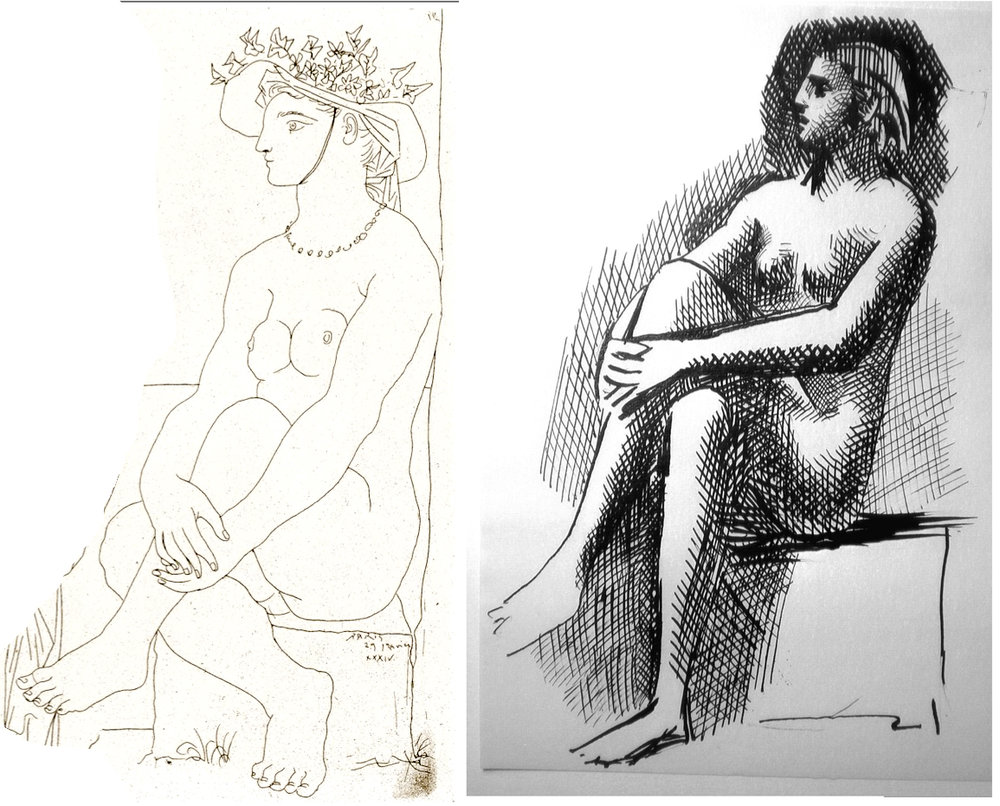
Another example of a forgery from the group is the head of Olga, and it makes me laugh, not because it quotes so heavily from the 1917 portrait Picasso did of her the year before they were married, but because the forger quoted the clouded eye of his 1903 painting Celestina for one of Olga’s eyes- that’s just funny. Also funny is the painting of the hand with the huge green halo around it, this time done in the style of Van Gogh! And the fakey ‘nude lying on the beach’ of 1920? There’s so very much to pick on in that one. The collages too - there are qualities that aren’t right in them either.
I’m not trying to say that this French electrician is a forger or liar, but having people learn how to see that these are fakes is important. Other people can decide if this whole new ‘trove’ of Picassos is a carefully conceived plot to absorb some of the millions floating around in the art world.
I’ve only covered two of these 11 works in detail, and that will do for now; I hope write more on this subject sometime in the future. The ‘experts’ say that the work is worth 80 million dollars, but truly, there are better places to put that money in the art world. There’s plenty of worthy artwork out there - just look.
